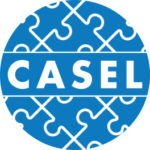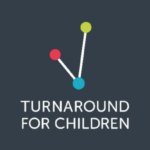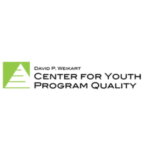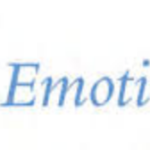Culture & Climate
Everyone contributes to building their campus climate and culture; leadership, however, plays a strong role in developing a positive (or negative) climate and culture for both students and staff members. Because campus climate and culture-building are an ongoing, dynamic process, leaders need to always be intentional about how they are actively fostering a positive environment and which practices contribute to their campus climate and culture. The SEL Steering Committee can support the ongoing development of healthy campus culture through implementation of SEL practices (for both staff and students) and feedback for continual improvement. It is valuable to collect both qualitative and quantitative feedback to inform decision-making and build collaborative, inclusive learning environments where both students and staff members can thrive. Remember to develop alignment between in- and out-of-school spaces by including school-based climate practices (e.g., chants, cheers, house systems, etc.) in afterschool programs and vice versa.
Calming Areas
A calming area is a quiet area of a room equipped with resources to help a student or adult de-escalate and/or practice self-management when upset, frustrated, or feeling overwhelmed. Calming areas may also be called calming zones, peace areas, or peace corners, but the primary goal is the same across all names: provide a quiet, private place for individuals to pause, reset, and refocus. Calming areas can exist in all areas of the campus to promote opportunities for self-regulation.
- OST Notes
- Specifically teach students how to use the materials in the calming area and the purpose of each item.
- Establish expectations and norms for use of calming areas, including time limits of when to return to the learning environment.
- Avoid using the calming area as a punishment.
- Conflicts can be resolved in a guided manner using the calming area. Students should not be sent to a calming area as a “time-out.”
- OST Guidance and Examples
- Emotional Regulation and Co-regulation
Respect Agreements
Respect agreements are documents with collaborative group norms that are developed and agreed upon by an entire group. For in-school and out of school time, this means that educators develop group norms in partnership with their students (or for staff members, supervisors and staff member teams develop collaborative group norms for meetings, etc.). Rather than having a set of rules given to students, respect agreements provide an opportunity for educators and students to discuss and agree upon expectations for student-to-student interactions, student-educator interactions, and everyone’s interactions with the learning space. By collecting input and developing consensus on group expectations, participants are likely to have greater understanding of their own group norms and develop a stronger sense of community. Respect agreements may also be called group norms, group learning agreements, or even a “Classroom Bill of Rights.”
Mood Meter/ Emotional Check-Ins:
A mood meter is a tool for guiding an emotional “check-in” for adults and children. The mood meter shows a range of feelings along levels of pleasantness and overall energy. Emotions change throughout the day based on our thoughts, and, ultimately, determine our actions. Therefore, it is important to learn to identify emotions and consider the potential impact that our emotions may have on others. Everyone’s emotions are unique to their own circumstances and experiences, and there is no “ideal” area on the mood meter. In this way, participants should never be shamed or encouraged to change their emotion. Rather, the intention of the mood meter is to build emotional literacy of students and adults by providing a tool that encourages individuals to:
- identify their emotion
- identify what caused the feeling
- practice a strategy that will help them get the most out of their day
Guidance from RULER (Brackett et al., 2013) suggests that the green and yellow quadrants are where we want to spend much of our time (mood) in school. A typical school day, however, will present a variety of emotions, and noticing them is critical to student engagement and learning. (Sample Mood Meter )
- Mood Meter Implementation Tips
- Once understood, use the mood meter in “morning meetings” and for daily journaling
- Conduct daily check-ins using the mood meter related to course content, tests, end-of-day reflections, and longer reflections (daily/weekly tracking)
- Use the mood meter for planning lessons by generating appropriate moods for different activities and content
- Post the mood meter prominently in your class
- Encourage student pairs to create emotion goals after tracking emotions
- Teach students how to generate thought and action strategies to achieve their emotion goals. For example, a middle school student cannot simply leave the classroom when angry; therefore, the student needs to modify or reframe their thinking. At other times, changing thoughts may not be sufficient and acting may be necessary. For instance, an apology often is a better way to reduce guilt for hurting a classmate’s feelings than reframing the situation.
- Create a strategy wall that references a variety of strategies for emotion regulation.
- Article: The Role of Emotion Co-Regulation in Discipline
Student Meeting History and Cultural Connection:
The morning meeting and community meeting practices used across our district have indigenous roots. The circle process that many non-Native people are using today is rooted in the tradition of “talking circles” that Indigenous Peoples in North America use and have used for millennia. Similarly, the “Talking Piece” is also an indigenous practice adopted by restorative practices. Dr. Loretta Standley, of the Cherokee Nation, states, “the art of Native communication style values cooperation over competition which reflects areas of their lifestyles. When engaging in conversation they listen intently generally looking down and do not focus on eye contact until the person speaking has finished.” As further explained in an article published by the publication Indian Country Today: “listening and understanding instills respect for those in attendance. As a result, at meetings or ceremonies, no one is left out of the process unless they have no comment. This methodology becomes a shared commitment.” Learn more about the history of “The Circle” and of the Talking Piece.
Morning Meeting:
Responsive Classroom defines “morning meeting” as a deliberate way (with a specific process) to begin the school day, during which all classroom members – grown-ups and students – gather in a circle, greet one another, and listen and respond to each other’s news. Teachers may use this time to gather data, such as who is present and who is absent, who is smiling and who is having a hard time smiling. Many non-academic issues can be addressed in a supportive manner to ensure that children are able emotionally to meet the challenges of the day.
The term “morning meeting” is used in elementary settings to refer to the time of the day reserved for building relationships in the learning environment, whether it’s in or out of school. Conducting morning meetings is a practice that creates an environment where students feel safe and have a sense of importance and belonging.
Morning meetings enhance connections between students and the teacher, build social and emotional skills (such as respect, communication, and impulse control), and strengthen academic competence in a fun, interactive and learner-centered manner. Students develop empathy by learning about each other and laughing together, which helps to reduce attention-seeking behavior and relational aggression. See the suggested format for conducting a morning meeting from Responsive Classroom in the following sample document. (Sample Morning Meeting Planning Document)
- Tips for enhancing morning meetings:
- Establish supportive expectations and routines
- Intentionally plan morning meetings with an SEL focus
- Integrate with academic content (including upcoming content for that day)
- Write the message prior to beginning of class
- Align in-school themes and topics with OST
Community Meetings:
The term “community meeting” is used in secondary settings to refer to the time of the day reserved for building relationships in the classroom. Community meetings help create a trusting classroom environment. During community meetings, students have ample opportunities to practice all SEL competencies. Community meetings serve various functions, such as providing student-centered opportunities to develop listening and communication skills, strengthen student relationships with each other and the teacher, as well as provide facilitators with insight for addressing spoken needs. Students and educators are able to expand their empathy and develop perspective-taking skills.












